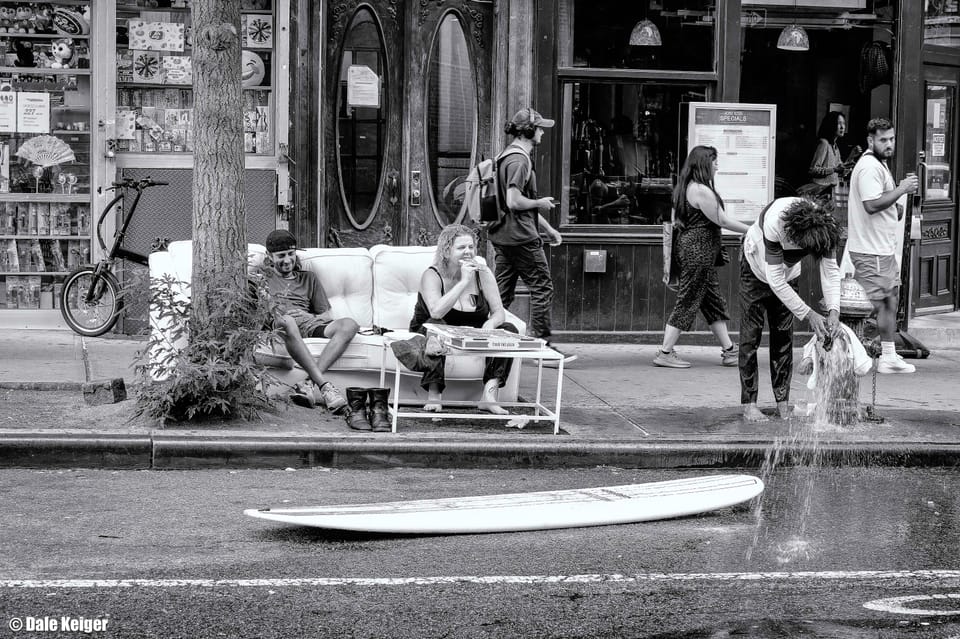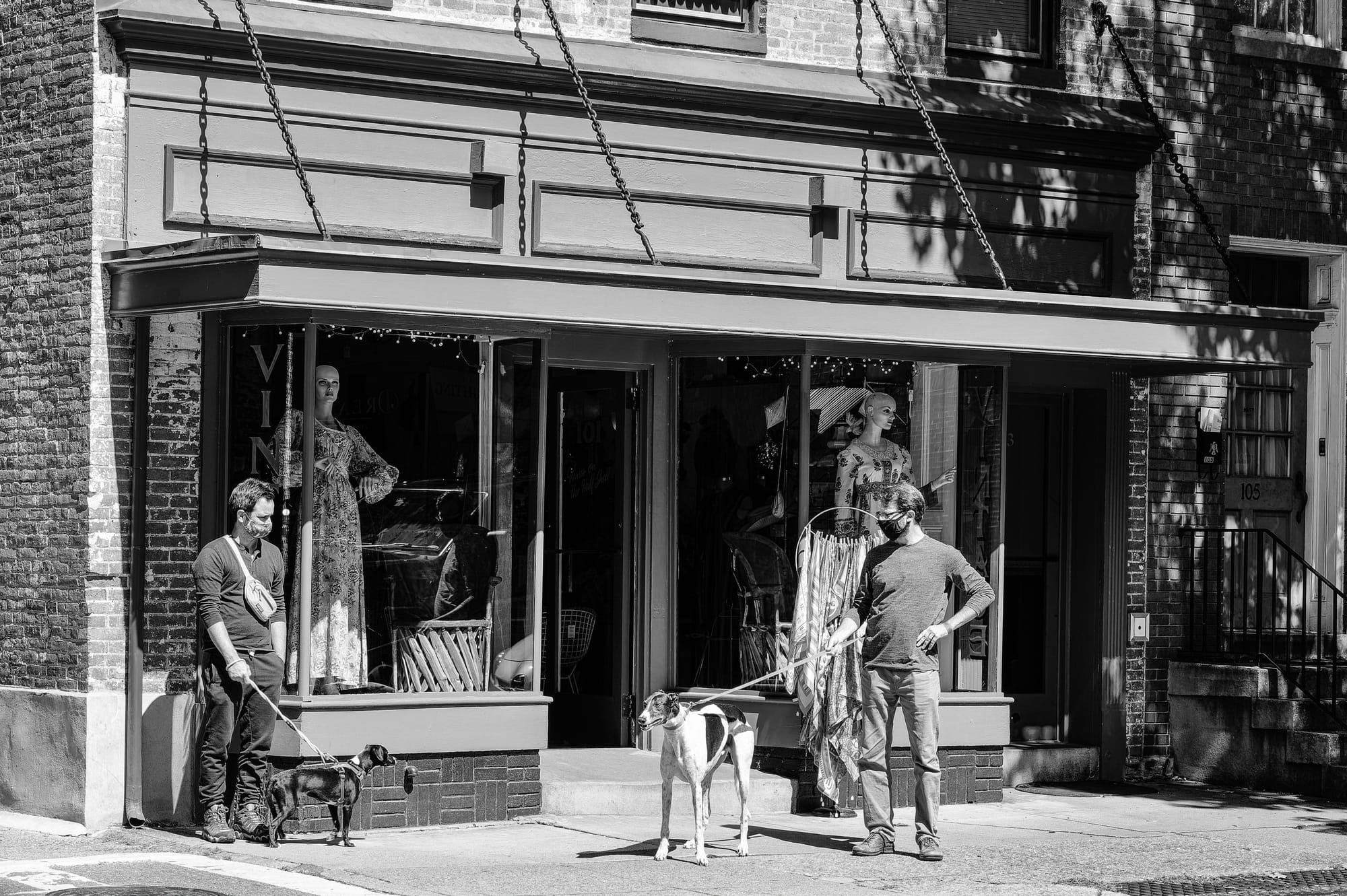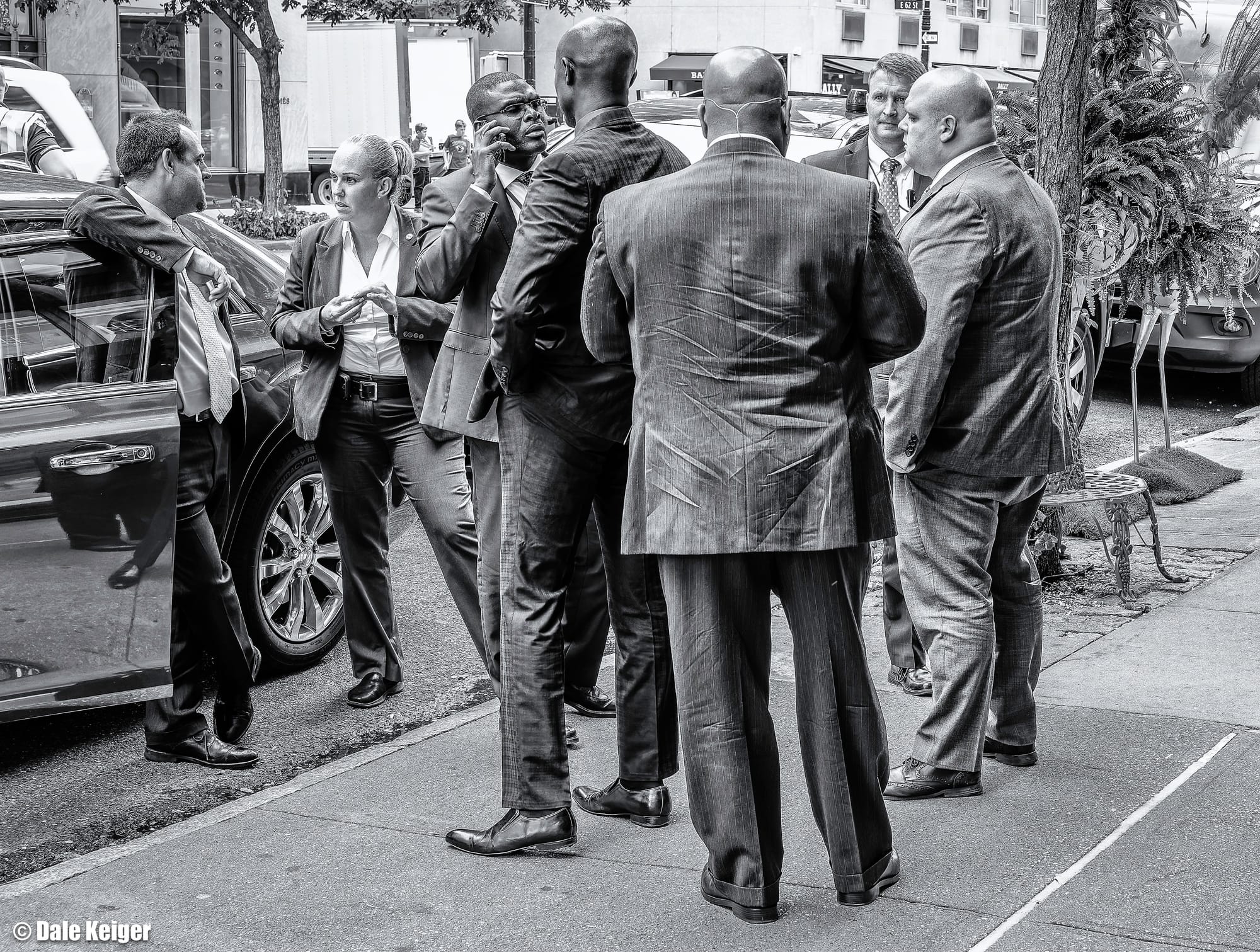Does the eye take in more than we think? Or, maybe luck isn’t blind

Letter No. 84: Includes incongruity, dogs, and rumpled garments.
When I was 18 years old, as a graduation gift my father gave me my first serious camera, an Argus/Cosina 35mm. I carried it to Europe that summer and took tourist shots while I toured with my high school band. When I got home, I put it on a shelf until my next trip.
This was the pattern for 20 years or more—pull the camera out for vacation, shoot a half-dozen rolls of Kodachrome on the road, then put the camera away. I didn’t get serious about making pictures until about 30 years ago. My first digital camera changed everything. No longer constrained by the cost and bother of film, I could learn by shooting thousands and thousands of lousy images. Every imaginable mistake—I think I made them all and still do—cost me nothing but time and a little bit of ego. The more I learned, the more I wanted to know. When I got a little bit better, I wanted to get better still. Praise from a few professionals started me thinking that perhaps I should stop thinking of myself as merely a writer who likes to take photos. Perhaps, if I would be willing to put in the work, I might be able, someday, to think of myself as a writer and a photographer.
All of this eventually got out of hand, in a good way. Now it’s common for me to have to make myself turn away from the camera or Adobe Lightroom to get some writing done. My focus became landscape and wildlife images, but there is a drawback to that. I live near Baltimore, Maryland, and getting myself to great natural settings is expensive. I love driving around Maryland taking pictures of farms and horses and birds, but how many snow goose and thoroughbred images can one person make?
So I’ve been trying to learn street photography. Downtown Baltimore, Washington, Philadelphia, New York—I can get myself to those places, and the work is a challenge because it takes a much different eye, quicker reflexes, and a social awareness not demanded by walruses lolling on an ice flow. I’m not very good at it, not yet, and that’s much of the point. I love to learn and I love to practice. I love understanding new ways to see.
Lately I have been wondering if the process of training the eye results, in time, with the eye prompting action because it has spotted compositional possibilities faster than the mind can sort them. Please look again at the photo at the top of this essay. I captured this scene a few years ago in lower Manhattan. What caught my eye was the incongruity of two people sitting on a sofa on a sidewalk, while on the street was...a surfboard? Over a few hours of observing the ever-changing panoply of New York streets, I hadn’t shot much, but I knew right away that this was a picture. This was a grab shot—grab the light, grab the scene, hope the composition works.
Only on processing the picture did I notice the woman was eating pizza. And the empty boots by the table, to whom did they belong? Maybe to the guy on the right who is washing—what? a shirt?—in the fire hydrant, which is turned on because...? I had missed that the two rightmost people were looking at me warily. The man on the left side of the sofa looks amused; not until I examined the image did I note the smiley face in the window behind him, even more amused. Four of the shoes on the striding pedestrians repeat the shape of the surfboard.

This one, above, I call “Masked Men.” I was across the street from them in Frederick, Maryland. The covid pandemic was still on and most people were masked, even outdoors. What caught my eye for an instant was just two guys + two dogs. Click. But look at the image for a moment more. The man on the right has an assertive stance that mirrors the assertive angularity of his purebred dog. The dog on the left might be purebred too, but he looks more like a mutt and his walker is a little slumped and slouchy and nondescript. And neither guy is commanding attention from anyone but me. The dogs are ignoring them. The female mannequins in the shop window are ignoring them. They look to be ignoring each other at this instant, gazing instead at the dogs. The covid years: Put on a mask and disappear.
Was it just fortunate accident that these two pictures have so many interesting and interlinked visual elements? Might well be. I’m not above giving myself undue credit now and then. But I have noticed that when something on the street causes me to raise the camera, most of the time there’s a lot more contributing to the picture than I realized when I tripped the shutter. Have I developed enough of a street shooter’s eye to “see” a whole picture without being conscious of all the elements that have aligned?
Eh, probably not. I suspect I need to put in many more hours before that becomes plausible. But as I keep practicing, I’m going to pay attention to how often this happens. I made the picture below because as I was walking down the street on Manhattan’s Upper East Side, I was struck by the incongruity of the two beefy guys in suits. They did not seem built for suits, or for jobs that might require them. Then I realized that they were among seven limo drivers loitering outside expensive boutiques while prosperous clients shopped. Click. Only later could I appreciate how the horizontal wrinkles on the suits extended up to the rolls on the wide guys’ necks. And note the different postures and what they might say. And the white earpiece wire trailing down the black man’s neck, tucked in a fold on the back of his head and suggesting the crosshatched wrinkles in his jacket.
Luck or design, it doesn’t matter. The street is rich.

Member discussion